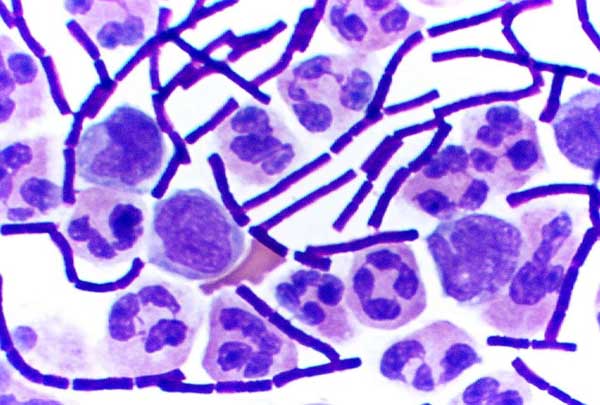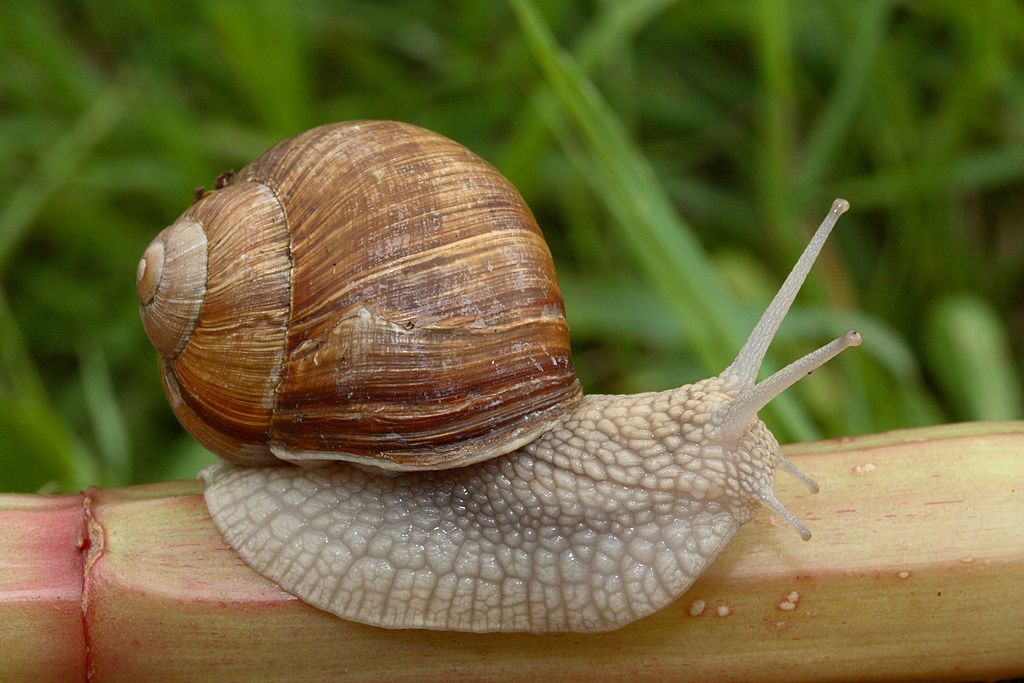Compare the morphology between bacteria and archaea. Hint - there are 3 forms.
Most common forms in both bacteria and archaea are sphere and rods.
Spherical forms – cocci
Rod forms – bacilli
Third form – spiral shape
List the three plant-like protists
Diatoms, Dinoflagellates, Euglenoids
Which type of algae forms underwater forests?
Brown Algae
Which type of animal has a distinctive feature of mammary glands?
Mammals
Which domain does this organism belong to? Which kingdom? Based on the kingdom, classify the organism.

Domain - Eukarya
Kingdom - Protist
Classification - Slime Mould (Plasmodial)
A scientist took a sample of a patients body fluid. The following are the results:  Is the following bacteria gram positive or gram negative?
Is the following bacteria gram positive or gram negative?
Gram positive
What are the two fungus-like protists?
1) Slime Moulds
2) Water Moulds
What are bryophytes?
small, non-vascular land plants (do not have vascular tissue)
Which invertebrates have a hard exoskeleton?
Arthropods (Phylum Arthropoda)
Which domain does this organism fall under? Which kingdom?

Domain: Bacteria
Kingdom: Bacteria
Compare the environments archaea and bacteria are normally found in. To get the marks you must use proper scientific terminology.
Archaea - extremophiles (found in extreme environments)
Bacteria - mesophiles (found in moderate environments)Explain three characteristics of euglenoids.
Could be any 3 of the following:
-plant-like (conducts photosynthesis - in sunlight)
-animal-like (heterotroph - in dark)
-has flagella
-has an eyespot
Any of the following 3:
-multicellular
-photosynthetic (autotroph)
-eukaryotic
-cellulose based walls
Explain the different between a vertebrate vs invertebrate
Animals without backbones – invertebrates
Animals that have an internal skeleton and a backbone - vertebrates
Which domain does this organism fall under? Which kingdom? Classify the organism based on the kingdom if falls under.
Domain: Eukarya
Kingdom: Protist
Classification: Brown Algae
Explain the difference in nutrition (metabolism) between bacteria and archaea. To get the points, be sure to use correct scientific terminology.
Archaea - live in digestive tracks of cattle and go through methanogenesis (produces methane as a byproduct)
Bacteria - can be photosynthetic (uses solar energy to convert CO2 and water into sugar and produces oxygen)
Explain which distinguishing feature for each animal-like protists helps it moves:
1) The Cercozoans: Phylum Cercozoa
2) The Ciliates: Phylum Ciliophora
3) Flagellates: Phylum Zoomastigina
1) Pseudopods
2) Cilia
3) Flagella
Explain the two types of vascular tissue. Explain the type of cells for each and what they transport.
Xylem – carries water and minerals from the roots to the rest of the plant
Consists of dead-tubed-shaped cells that contain a tough material called lignin
Phloem – tissue made of living cells that are arranged in tubular form, used for transporting larger molecules including sugars
Which kingdom does the following organism belong too? Which phylum? Which class? 
Kingdom: Animalia
Phylum: Mullusca (mollusc)
Class: The gastropods

Domain: Eukarya
Kingdom: Plants
Classification: Angiosperm
1) Do bacteria and archaea reproduce through mitosis or meiosis?
2) Explain binary fission and conjugation. Can both bacteria and archaea go through these processes?
1) No
2) Binary fission - asexual form of reproduction in which a cell divides into two genetically identical cells
Conjugation - a process in which there is a transfer of
genetic material involving two cells (sexual)
Yes - both archaea and bacteria do
Which protists changes shape using their internal cytoskeleton to move and create different forms?
The Cercozoans: Phylum Cercozoa (Amoebas)
Explain two different characteristics of monocots and dicots
Any 2 of the following:
Monocots: one cotyledon, veins in leaves usually parallel, flower parts in multiples of three
Dicots: Two cotyledon, veins in leaves usually net-like, flower parts in multiples of fours or fives
Explain five major characteristics of animals
Eukaryotic, multicellular organisms – do not have cell walls
Heterotrophs – usually ingest (take in) and then digest their food
Usually mobile or have the ability to move in at least one stage of their lives
Reproduce sexually
Which domain do these organisms belong to? Which kingdom? Based on the kingdom classify the organism.
Kingdom: Protist
Classification: Diatoms

